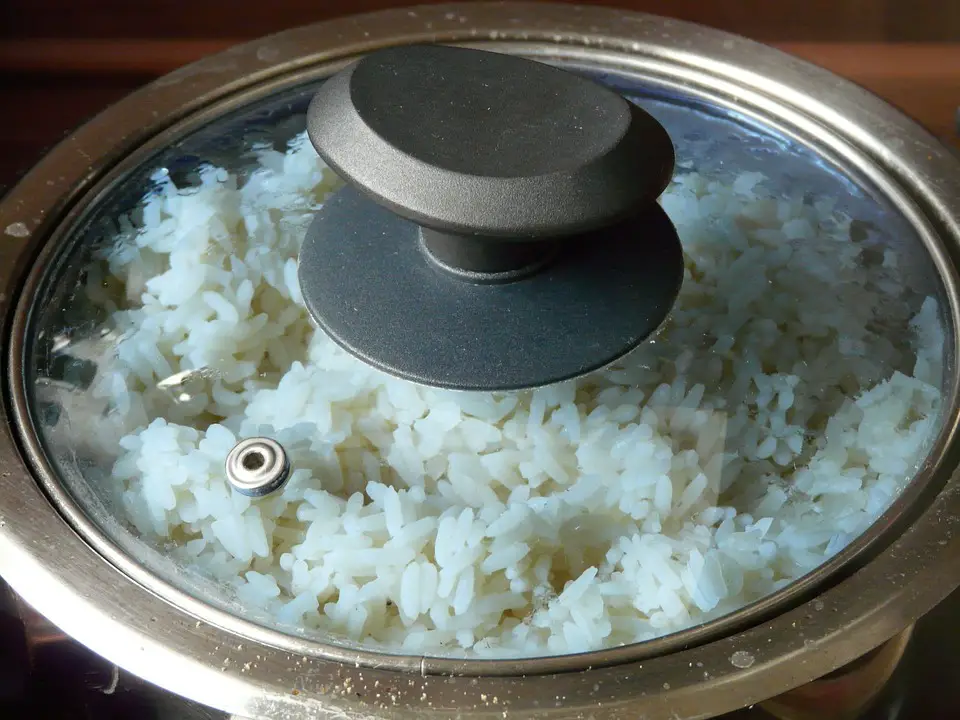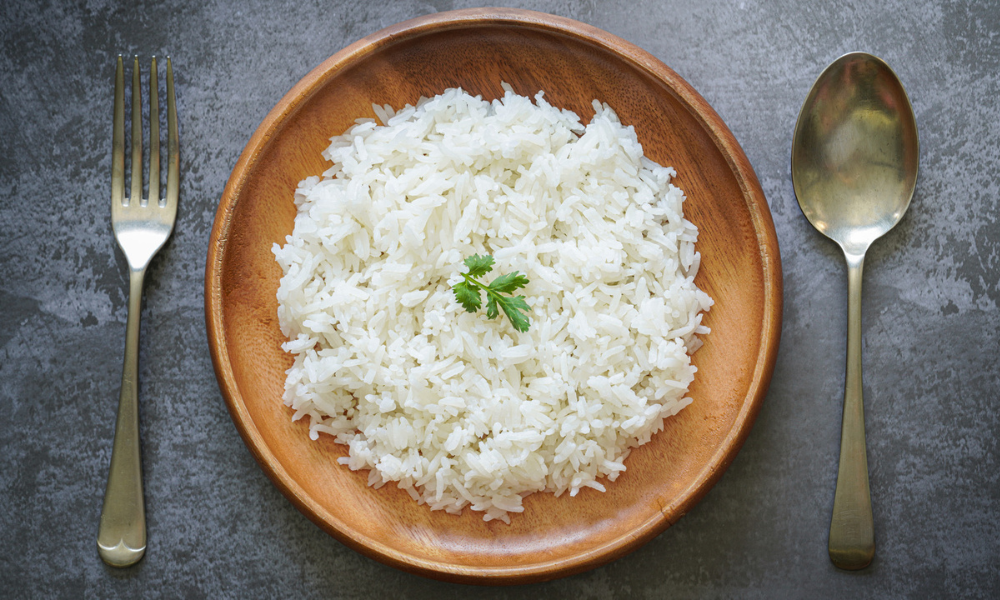If you enjoy rice as much as we do, you undoubtedly fall into the category of people who can and do eat it at least once every day. The major ingredient in enduring family favorites like Arroz con Pollo or Mexican Rice, rice is the ideal side dish for anything from a steak supper to classic seafood dishes or vegan tofu. Some people, especially those with busy schedules, like to prepare their meals in advance and store them in the refrigerator where they can be easily reheated and enjoyed.
Have you ever tried batch cooking or meal preparing yourself? Rice can also be prepared in advance and served with a similar texture and flavor if you precook your dishes to save time. Yes, rice that has been warmed up can still be delicious. You only need to remember a few tried-and-true techniques. Additionally, remember that not all rice can be heated in the same way; it all depends on the method you select and whether you’re boiling it alongside other dishes.

About Rice
Rice is an edible starchy cereal grain produced by the grass plant (family Poaceae), Oryza sativa. Most of the world’s population, including almost all of East and Southeast Asia, depends entirely on rice as a staple food, with humans consuming 95% of the world’s rice production. Rice can be cooked by boiling it or by grinding it into flour. In Asian, Middle Eastern, and many other cuisines, it is consumed alone and in a wide range of soups, side dishes, and main courses. Rice is also a component of morning cereals, noodles, and alcoholic drinks like sake from Japan.
The cultivated rice plant is an annual grass that reaches a height of roughly 1.2 meters (4 feet). Long and flattened leaves are carried on hollow stems. Frequently, the fibrous root structure is wide-spreading. The spikelets carry flowers that give rise to the fruit, or grain, making up the panicle or inflorescence (flower cluster). The panicle’s length, shape, and weight and the general production of a particular plant vary substantially between varieties.
How to Reheat Rice in the Oven?
While reheating rice for multiple people in the oven is preferable to doing it in the microwave for smaller amounts. Aluminum foil and a shallow oven-safe dish are required.
Step 1
- Set the oven to 300 degrees Fahrenheit. Spread the rice evenly over the baking dish, breaking up clumps with a fork.
Step 2
- Pour two tablespoons of water or broth per cup of rice. Cover the dish tightly with foil.
Step 3
- Bake for roughly 20 minutes or until thoroughly heated.
Use this technique to reheat rice for your meal or as a simple side dish at supper! Use leftover rice or pre-cooked rice from a previous batch in this recipe for rice and turkey stuffed peppers.
How to Reheat Rice Without Drying Out?
Pour enough liquid over the rice to moisten the grains and add volume before reheating. Adding one tablespoon of water to each cup of cooked rice and covering it with a microwave-safe lid or cloth to create steam are the best ways to cook rice without drying it out.
Foods heated by the heat source, such as rice and other starches, sometimes cook unevenly. To prevent the grains from drying out while providing an even heat throughout the grain, I like to stop cooking my rice halfway through, stir the grains with a fork or spoon, and then continue cooking it.
Make sure to keep the remaining rice in an airtight container to extend the shelf life of the food.
This keeps it from drying out, extending the time it may be stored. Rice should only be heated through once because it can become hard if left out for more than a day. Any uneaten rice should be thrown away because it will quickly lose moisture. As an alternative, you might cook with leftover rice.
What are the Different Varieties of Rice Available in the Market?
Carolina Gold Rice
Anson Mills saved the rice variety Carolina Gold from extinction; Keith Pandolfi’s account of the history of this unique grain explains why Carolina Gold is so cherished. I can discern that Carolina Gold is a long-grained, nonaromatic japonica cultivar. Anson Mills now creates Charleston Gold, a long-grained fragrant variant of Carolina Gold that has been crossed with Indica strains.
Sticky Rice
Sticky rice sometimes referred to as glutinous or sweet rice, is a short-grain japonica variant with a relatively high amylopectin content, making it very sticky. It is generally utilized in Asian cuisines as a side dish as well as in sweet meals (such as when paired with mango and sweetened coconut milk) and desserts (as when served as part of a Thai or Lao meal or when wrapped with a bunch of flavorful ingredients for the dim sum staple lo mai gai). To achieve consistent cooking, sticky rice must be soaked.
Wild Rice
A remark that can send Daniel into a tizzy is that “wild rice” sold in the United States is neither wild nor rice. While real rice belongs to the family Oryzae, wild rice is of the genus Zizania. It is the harvested seed of a cultivated, water-loving grass from a completely different species. However, we should mention it here because we consume it as rice.
What are the Two Types of Starch Present in Rice?
Amylose and amylopectin are the two main kinds of starch found in rice. Both are substantial glucose-based carbohydrate structures. While amylopectin is heavily branched, amylose is a straight chain. Amylopectin is more water soluble than amylose, which makes the surrounding water viscous. The texture of cooked rice varies due to this structural variation.
Amylose is less soluble and does not quickly gel or cause a thickening effect in hot water. While rice with a greater relative amylopectin content tends to create stickier rice with less separation between grains, rice grain variants that are comparatively high in amylose tend to be more separate when cooked.
What are the Different Ways of Cooking Rice?
Any method is based on two main ideas: boiling and steaming. Both procedures involve heat and water, which are necessary for the starch to gelatinize.
Boiling
Rice can be cooked by simply boiling it in a lot of water. This approach, commonly referred to as the pasta method, ensures sufficient water for gelatinization. The rice is drained after cooking and is then allowed to rest until needed. Since the amylopectin that has leached into the liquid surrounding the grains is drained off, this procedure usually results in very distinct grains. It works well with long, distinct grains of rice like basmati, which is highly prized.
Steaming
Pure steaming is the other extreme. Because steaming is a gentler cooking method that doesn’t break up the grains as much as rapid boiling, it is good for low-amylose grains like Thai sticky rice. However, it’s a unique technique for long-grain rice.
Boil-Steam
The boil-steam technique includes heating the grains in a specific amount of water in a stovetop pot and is the most common way to prepare rice. The remaining steam completes the gelatinization process as the rice soaks up water.
The boil-steam method seemed the ideal approach to investigate my objectives, even though boiling or steaming may play to the extremes of textural effects.
What are the Health Benefits of Consuming Rice?
Nutrients and Fiber
The two most widely consumed rice varieties, brown and white, share the same ancestry.
The full rice grain is what is referred to as brown rice. It includes the carbohydrate-rich endosperm, nutrient-rich germ, and fiber-rich bran.
On the other hand, white rice is devoid of the bran and germ, leaving only the endosperm. Then it is processed to enhance the flavor, lengthen the shelf life, and improve the cooking qualities.
White rice is considered an “empty carb” because it has lost most of its nutritional value.
White rice, however, is frequently fortified with extra nutrients in the US and many other nations, such as iron and B vitamins, including folic acid, niacin, thiamine, and others.
3.5 ounces (100 grams) of brown rice provides twice the fiber of white rice and fewer calories and carbohydrates.
Generally speaking, brown rice contains more vitamins and minerals than white rice. The iron and folate content of enriched white rice is greater.
Additionally, brown rice has more antioxidants and necessary amino acids.
The fact that white and brown rice are both naturally gluten-free makes them excellent carbohydrate choices for those with celiac disease or non-celiac gluten sensitivity.
Reference: Rice nutritional and medicinal properties: A review article
The most popular cereal is rice, which provides a reliable source of nutrition for about half of the world’s population. In Asia alone, almost 2 billion people rely on rice, which has 80% carbohydrates, 7†“8% protein, 3% fat, and 3% fiber, to meet their energy demands. Compared to other cereals, rice has fewer antioxidant molecules or less antioxidant potency. Food-derived drug molecules have traditionally been chosen. Natural molecules might have reduced or no harmful effects and higher physiological compatibility. Around the world, various studies on various rice varieties are being conducted. Numerous publications from various nations have demonstrated the powerful effects of various rice varieties against diabetes, hyperlipidemia, cancer, inflammation, etc.
Developing functional meals, medications, food preservatives, pharmaceuticals, and cosmetic goods based on rice may be possible. Rice is also a strong candidate for natural sources of antioxidants and other medical characteristics.
Conclusion
One of the best ways to reheat rice is to rehydrate it in the oven. This is a great option for large pots of rice or leftover Chinese food. However, you have to ensure the rice doesn’t dry out or get overcooked. This can be tricky when using the microwave, so a safe way to reheat rice in the oven will be best.
Rice is best reheated at a temperature of 165°F. This is the minimum temperature recommended by the USDA for reheated foods. When the temperature is below this point, bacterial growth can start. However, if the rice reaches this temperature, it is safe to eat.
